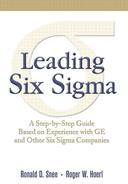The Concept of Process Entitlement
Entitlement is one of the most important concepts in process improvement, and is particularly useful in project selection. It is defined as the best performance that you can reasonably expect to get from a process (Harry and Schroeder [2000]). As the term implies, leadership is essentially entitled to this level of performance based on the investments they have already made.
Knowing the process entitlement defines what's possible. If entitlement is 500 units per day and the baseline performance is 250 units/day, you can easily see that there is a lot of room for improving this process. On the other hand, if current baseline performance is 480 units/day there is little room for improvement. If higher production rates are needed, a search for a totally new process may be in order (i.e., reengineering or DFSS).
As an analogy, the concept of par for a golf hole is intended to represent the entitlement for a very good golfer. That is, for such a golfer par represents what score is possible and reasonable to expect. On one hole a golfer may score less than par, but it is unrealistic to expect such performance on every hole, or even on average. Of course, all golfers have their own unique capability, so the official par doesn't represent process entitlement for the average duffer. Proper analysis and/or calculations would reveal the appropriate individual entitlement, which for professionals would be better than par, and for most golfers much worse. Note that standard golfing handicaps are usually based on average performance, which is not the same concept as entitlement.
It is not uncommon to learn in situations where capital is being requested to increase capacity that baseline production is not near entitlement, once it is carefully calculated. Six Sigma projects are subsequently instituted to increase the capacity of the current process with solutions that don't require capital. Most companies deploying Six Sigma have been able to cancel existing capital expansion plans because of capacity that has been freed up through Six Sigma with no capital expenditures. For example, if a chemical plant with six production lines is running at a 25 percent waste level, reducing the waste levels to 10 percent (60 percent reduction) creates additional capacity of 6 x 15% = 90% of a production line, or essentially creates a new line with no capital expense.
Entitlement should be determined for all key process performance measures (yield, cost of poor quality, capacity, downtime, waste, etc.). It may be the performance predicted by engineering and scientific fundamentals, nameplate capacity provided by the equipment manufacturer, or simply the best, prolonged performance observed to date.
Entitlement can also be predicted from empirical relationships. In one instance it was observed that a process operating at a cost of $0.36/unit had at one time operated at $0.16/unit (correcting for inflation). This suggests that the process entitlement (as determined by best prolonged performance) should be $0.16/unit. On further investigation it was observed that there was a linear relationship between defects and cost/unit of the form:
Cost = $0.12 + 3(defects)/1,000,000.
Therefore if defects could be reduced to very low levels (essentially zero) the true process entitlement may be as low as $0.12/unit.
Entitlement is used in project selection as follows:
Look at the gap between baseline performance (current state) and entitlement (desired state).
Identify a project scope that will close the gap and can be completed in less than 4-6 months.
Assess the bottom line impact of the project and compare it to other potential projects. A Black Belt or a Green Belt is assigned as priority dictates.
The gap between baseline and entitlement is rarely closed in the course of a single project. It is not uncommon for several projects to be required. In each instance the business case for the project is determined, the project is prioritized relative to the other potential projects, and a Black Belt or Green Belt is assigned as business priorities dictate.
Entitlement defines the performance level it is possible for a process to attain. It provides a vision of possible process performance, thereby providing a performance level for which to aim. It tells you how close current performance (baseline) is to the best possible performance. It also provides a benchmark that you can use to compare your process to other processes in your company or to processes in other companies. It is prudent to compute process entitlement values before doing any benchmarking studies to provide a basis of comparison.
Keep in mind that process entitlement can, and often does, change as you learn more about it. In most cases, the process entitlement calculations are simply estimates of the true entitlement, and you can update and enhance them over time. After a few Six Sigma projects, it is not uncommon for a process to be performing beyond the entitlement level initially determined for the process. Changing the value of process entitlement as you better understand the process is a natural result of Six Sigma projects, and the need to do so should not come as a surprise.
